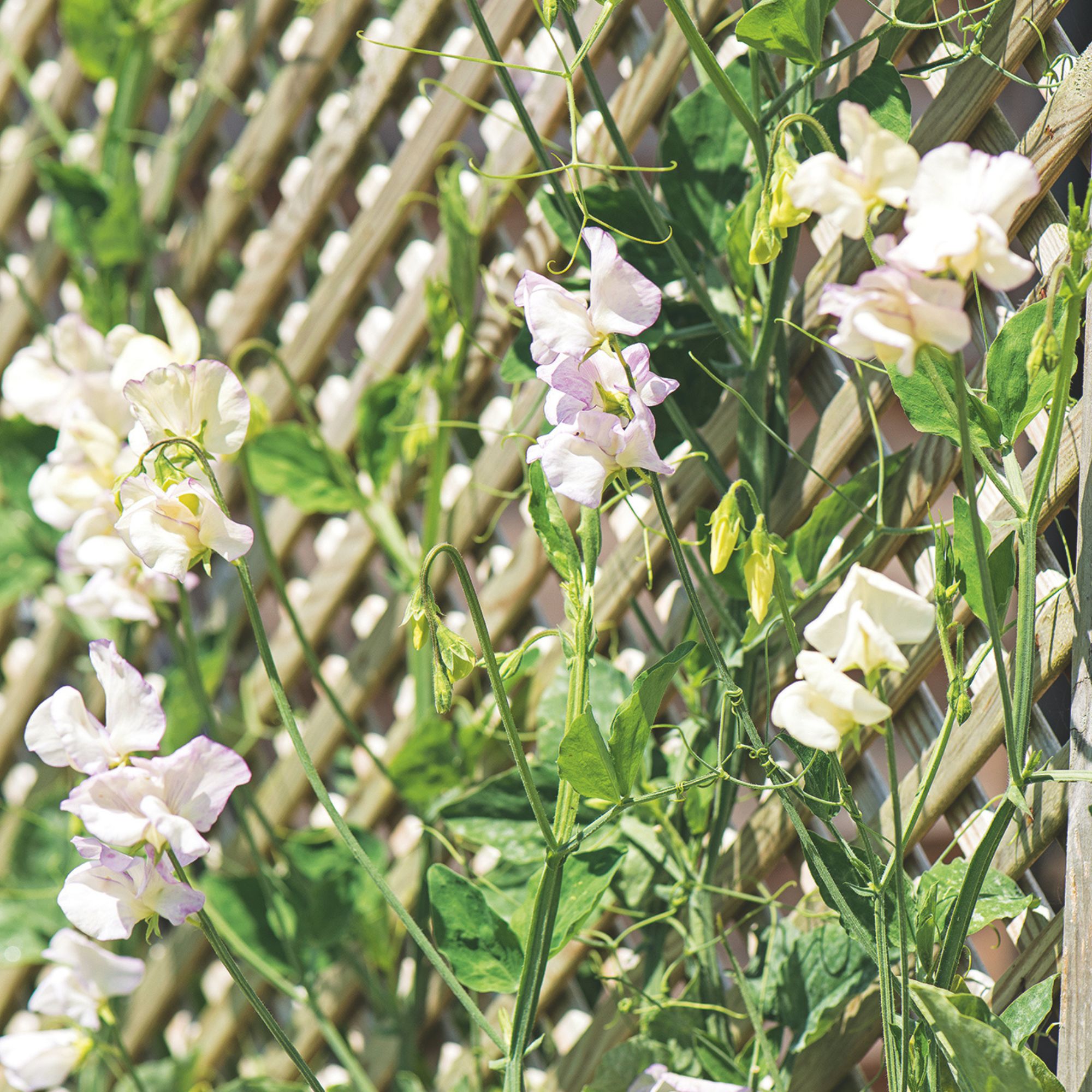
Wondering how to care for sweet peas? They’re one of the most beautiful, fragrant plants you can grow, but to get the most out of them, looking after them properly is key.
Once you’ve learned how to grow sweet peas from seed, or you've bought plug plants, you’ll need to make sure you’re giving them all the right TLC to help them thrive as flowering summer plants.
If you’re wondering how to care for sweet peas, exactly, we’ve put together a guide to nurturing them into your most successful blooms yet.
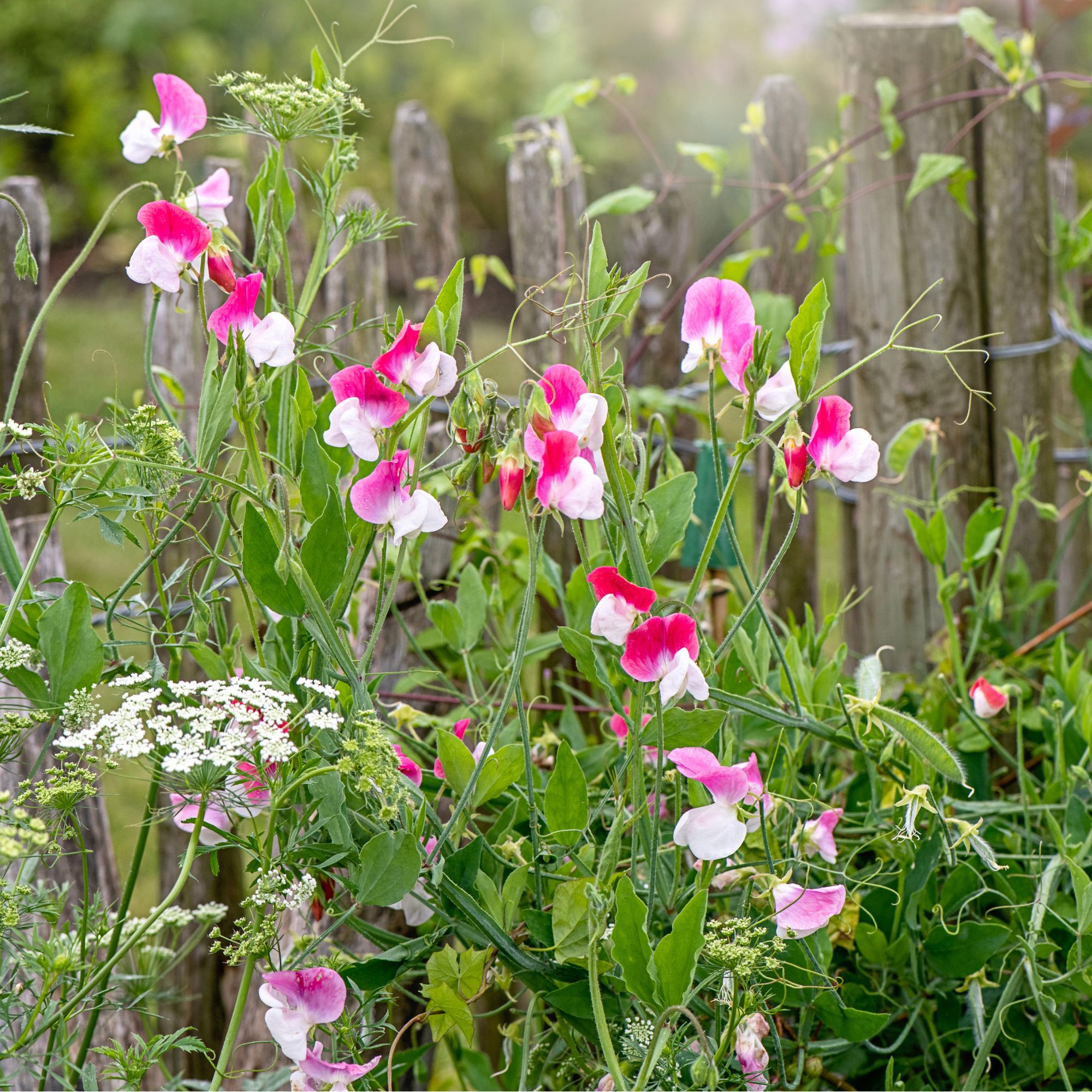
What you’ll need
- A high-potash fertiliser like this Levington Tomorite Liquid Tomato Food from Amazon
- Plant supports like this True Products Climbing Plant Support from B&Q
- A watering can like this Spear & Jackson Steel Watering Can from John Lewis
1. Location
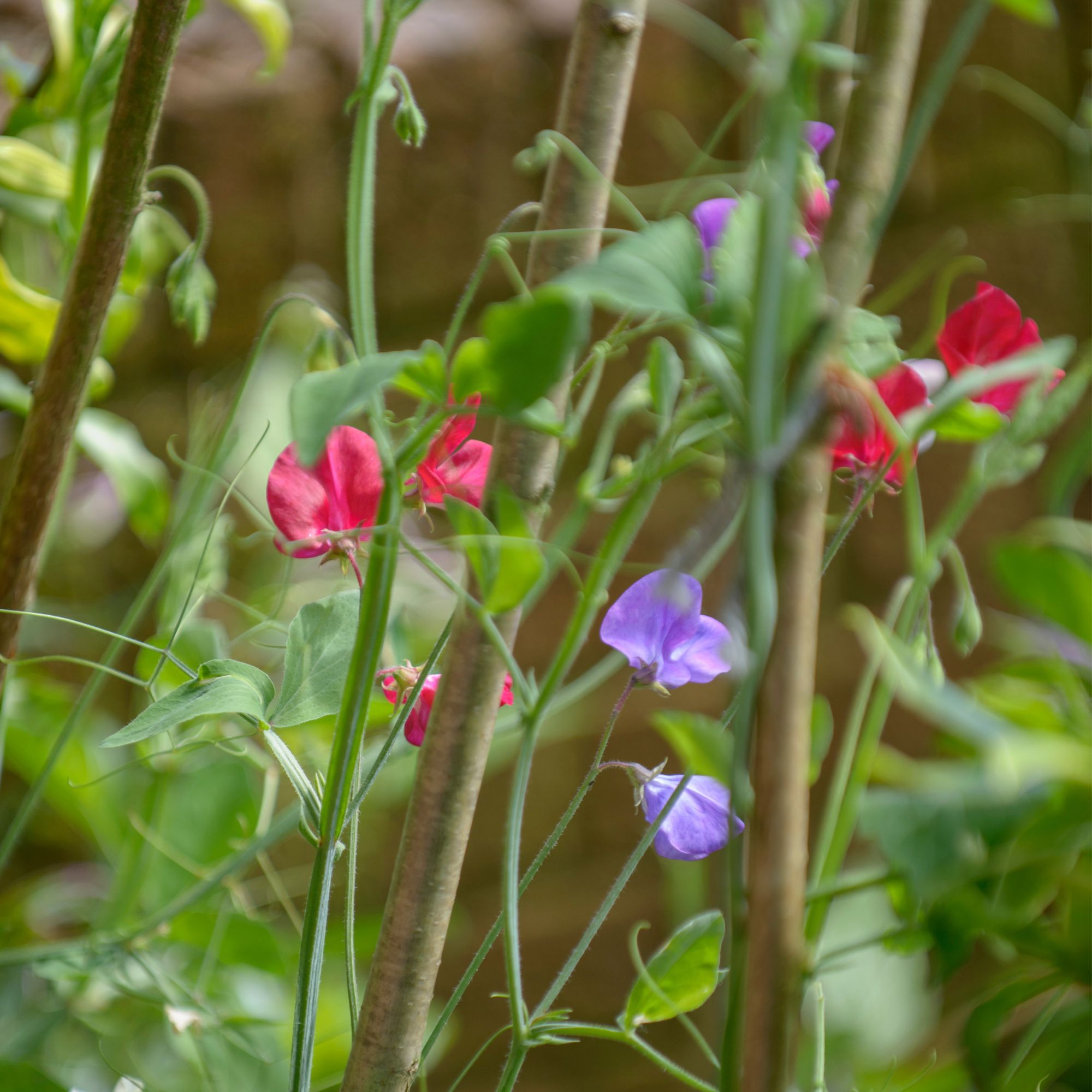
Before you work out when to plant out your sweet peas, you'll need to consider the best place to grow them. In fact, location is the foundation of learning how to care for sweet peas.
‘Sweet peas like to be planted in a location that receives full sun to partial shade,’ says Steve Chilton, garden expert at LeisureBench. ‘They best thrive in areas that receive at least six hours of direct sunlight per day.
'In terms of soil, they prefer well-draining soil that is rich in organic matter.’
2. Watering
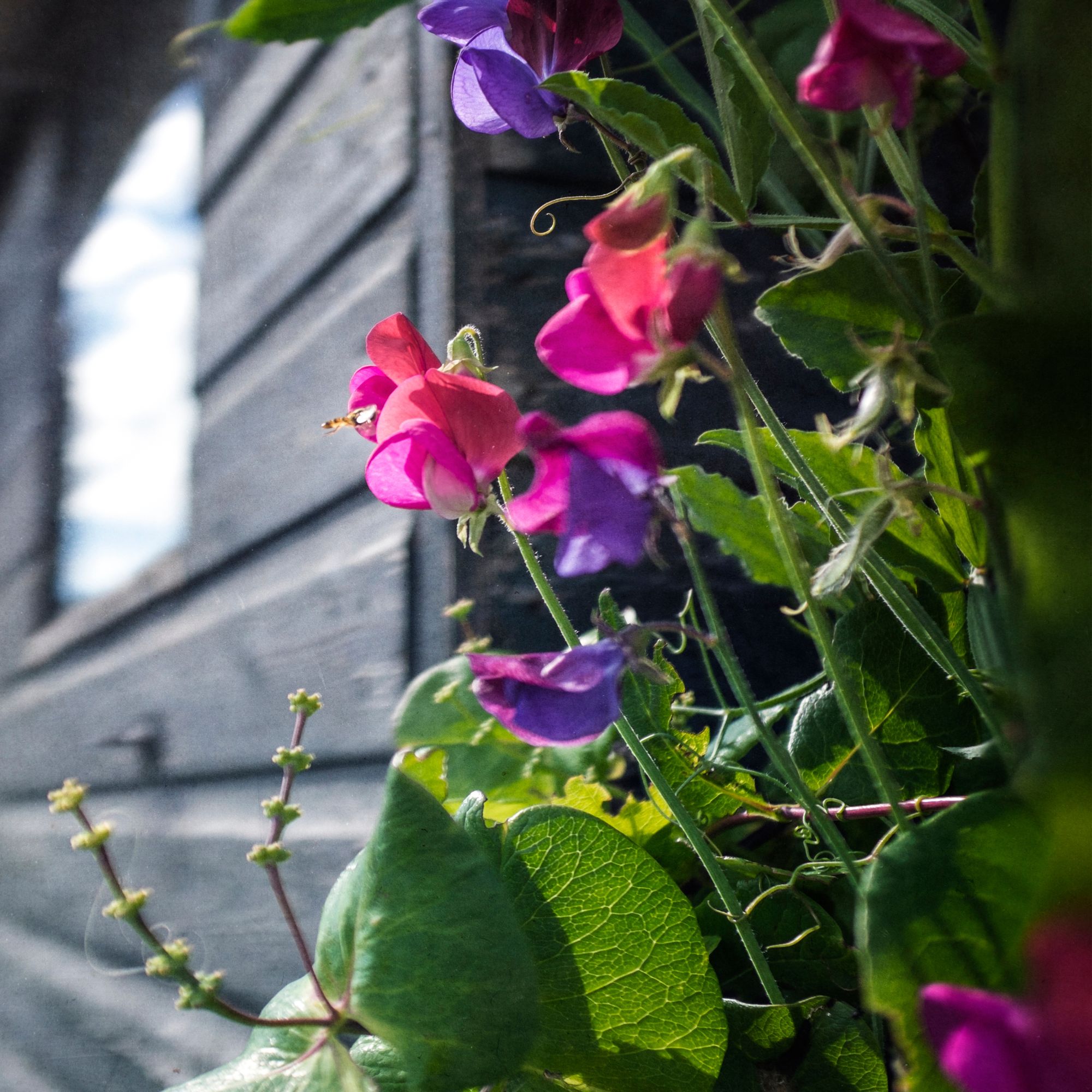
As they love the sun and well-draining soil, it probably won’t surprise you to learn that sweet peas love to be watered well.
'Water sweet peas regularly, especially in dry spells,' agrees gardening expert and author Sarah Raven.
It’s good practice to keep the soil moist at all times. During high temperatures, this could mean watering them a few times a week.
3. Support
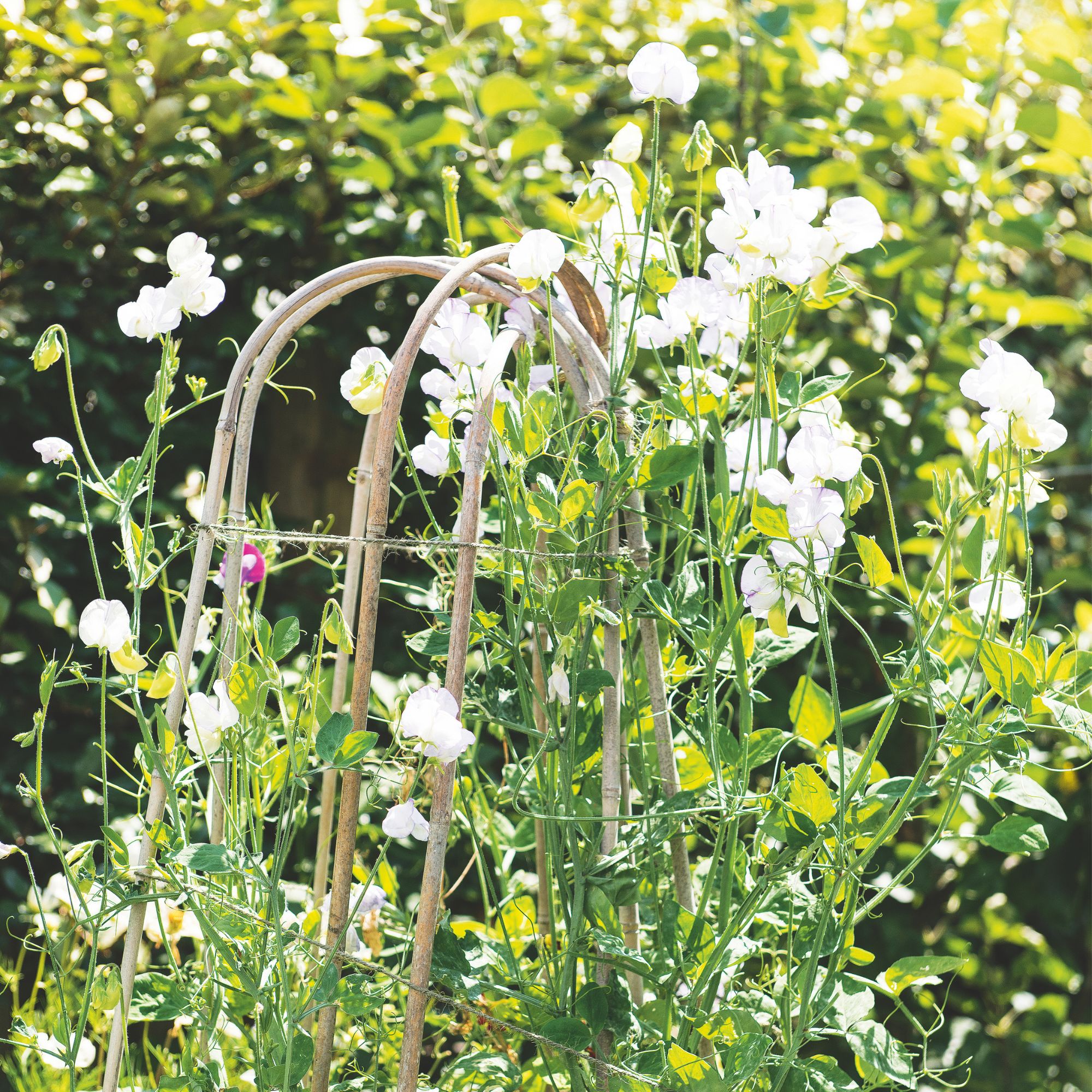
Sweet peas are climbers by nature, which means they need a little support to reach their full potential.
'Sweet peas are a cottage garden essential,' says Peter Tasker, senior gardener at the National Trust’s Hill Top in Cumbria. 'We plant them out in a nice fertile soil and grow them up a tepee of hazel poles.'
How you support your sweet pea plants is up to you, but offering them the likes of trellis, netting or pea sticks to cling to as they grow is the best way to ensure tall blooms that make a real statement in your garden.
4. Fertilising
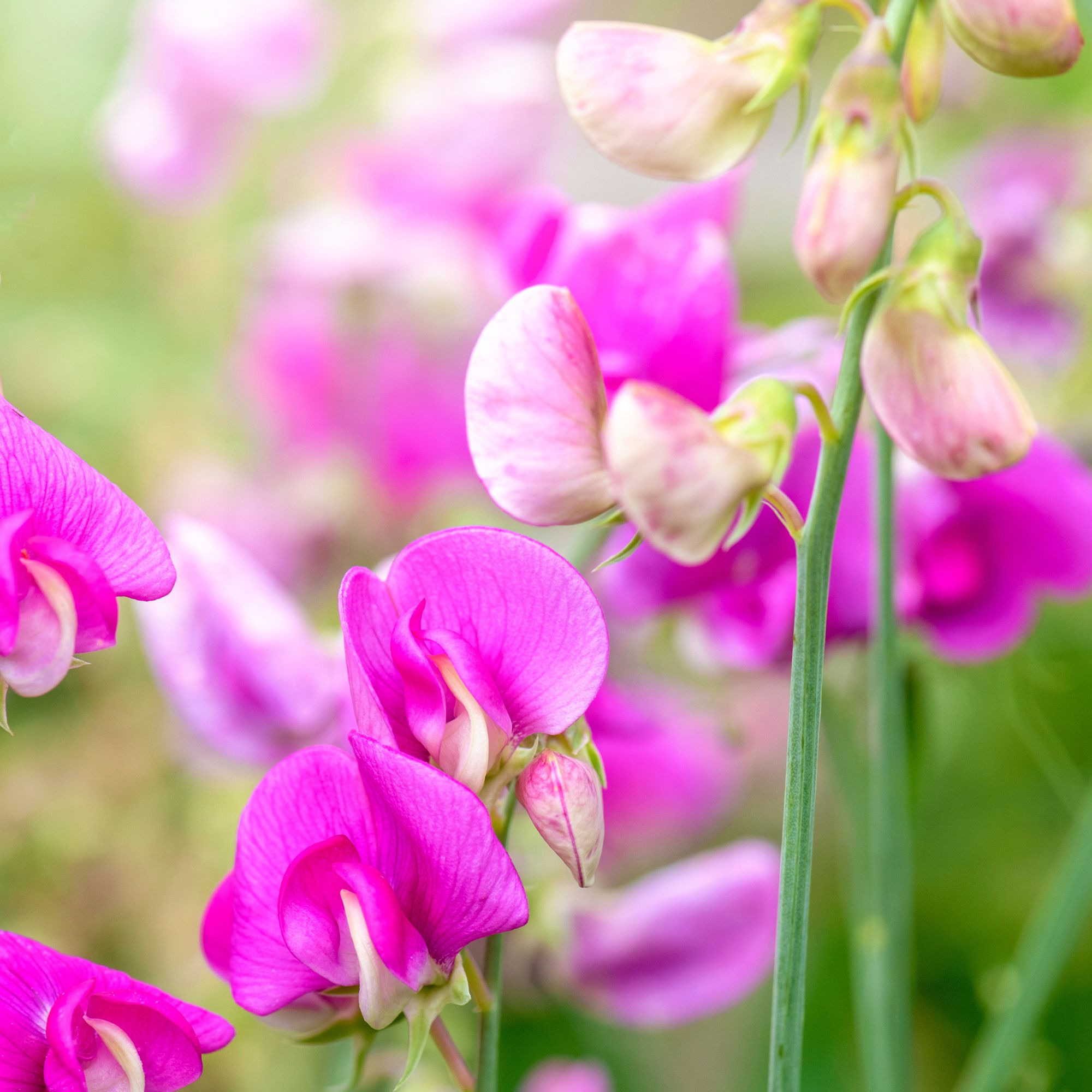
As well as needing structural support, your sweet peas will thank you for some fertiliser now and then.
'Feed them with a potash-rich fertiliser every couple of weeks once they start flowering,' advises Sarah.
If you can, do this every few weeks while your sweet peas are in flower. You may even find it increases their blooming time.
5. Pinching out
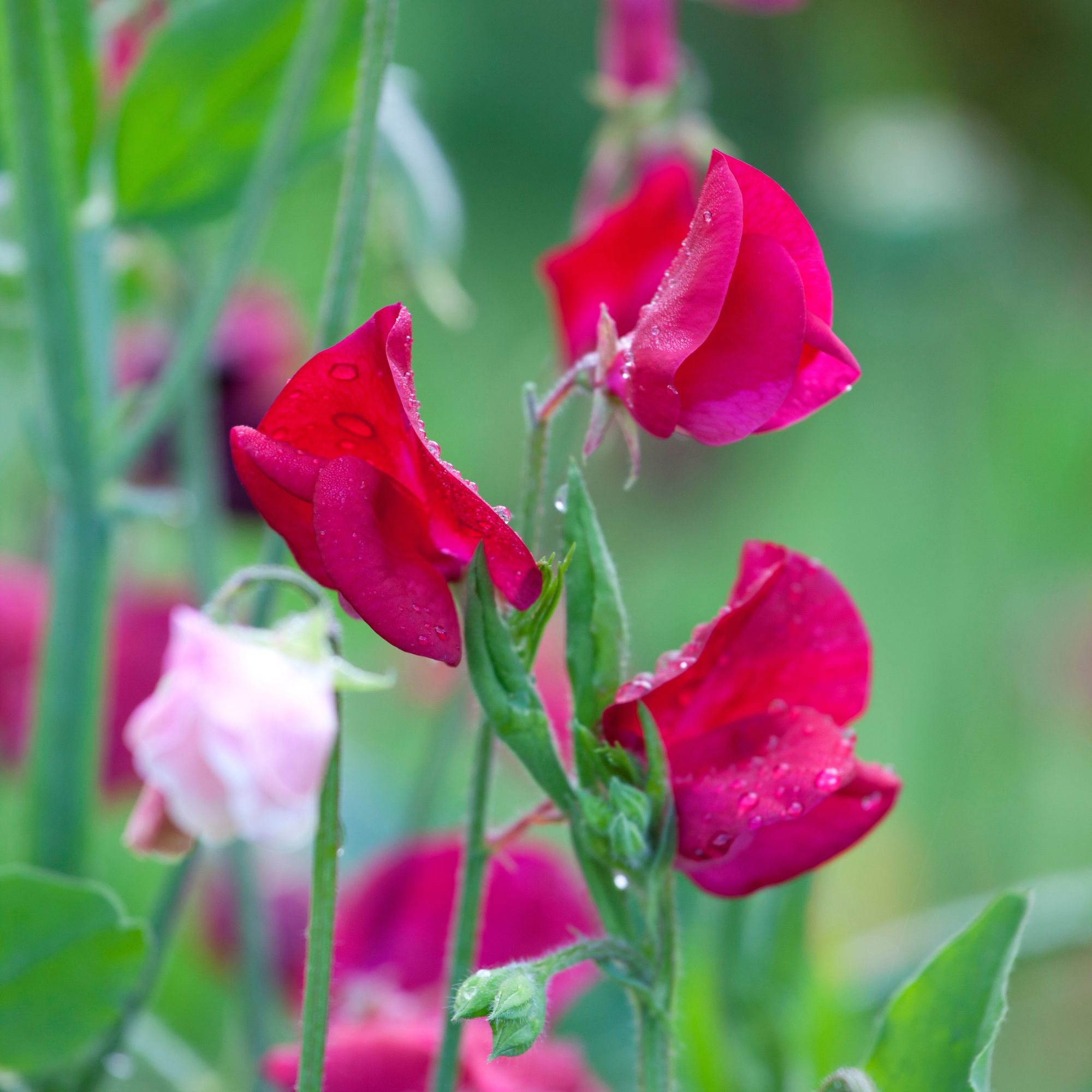
To encourage as many flowers as possible, it's important to learn how to pinch out sweet peas.
'Once the plants reach a height of 10cm, pinch out the tips to encourage bushier foliage,' advises David Glass, head gardener at Bowood House & Gardens.
6. Picking the flowers
While it’s important to deadhead any spent flowers, it's also a good idea to pick healthy flowers while they’re still in full bloom.
'Once the flowers emerge, keep picking them for vases and remove any seed pods as soon as you spot them to encourage more flowers,' says David.
Thankfully, sweet peas make a great addition to big bouquets or smaller vases, so you can still make use of these flowers when you’ve picked them.
It's also a good idea to give them a harder prune later in the season.
'Sweet peas’ stems tend to get shorter as the season goes on,' David explains. 'Once this starts to happen, try picking the tendrils, too, for a more relaxed arrangement. Cutting this back will also do the plant some good.'
FAQs
What is the best month to plant sweet peas?
If you’re wondering when to sow sweet peas, you have two windows: October and November, or early Spring.
If you’re planting established sweet pea plants, you can do this anytime between April and June.
Take care of your sweet peas, and they’ll put on beautiful, fragrant displays in the summer.







